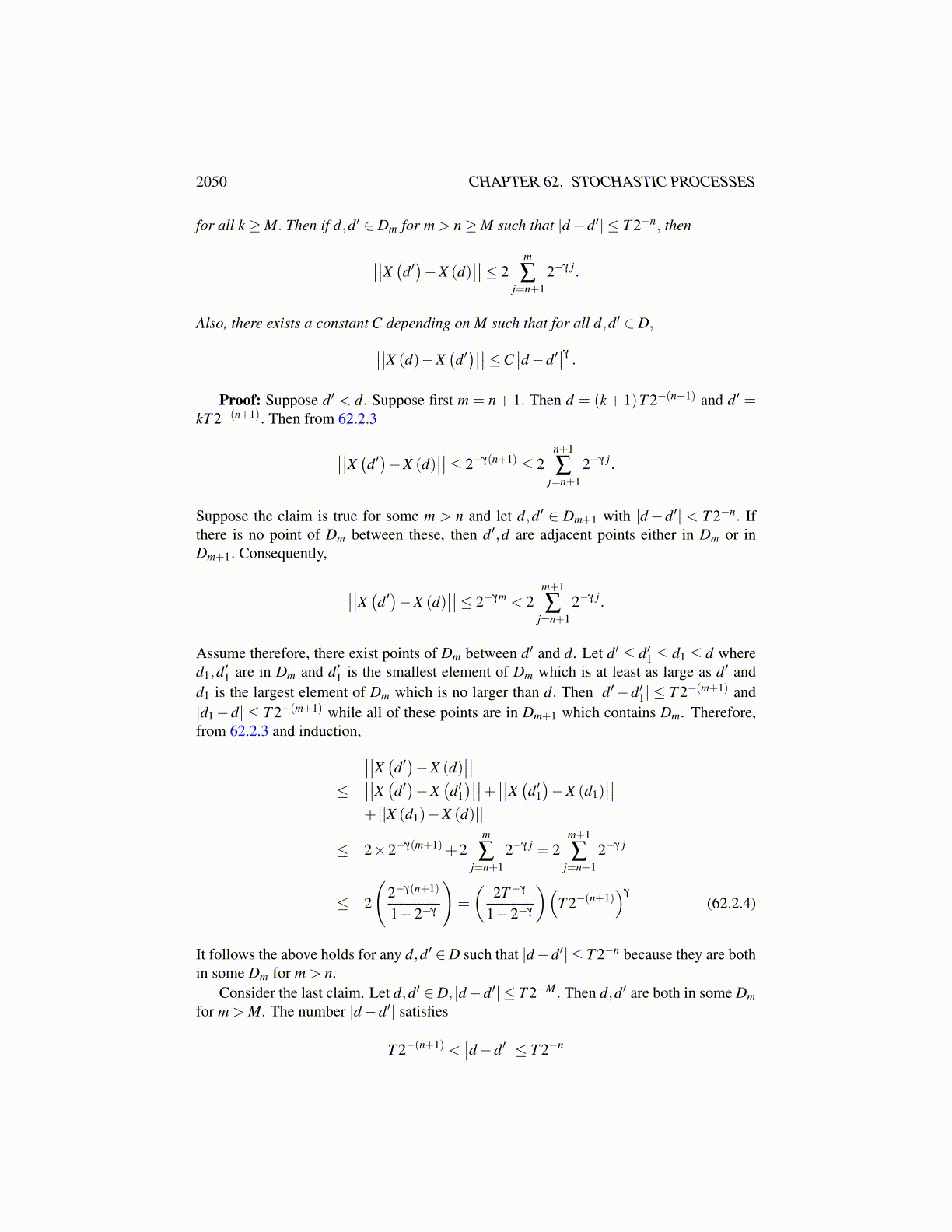
2050 CHAPTER 62. STOCHASTIC PROCESSES
Proof: If this is not so, there exists ε,δ > 0 and points of I,sn, tn such that even though
|tn− sn|<1n,
P([||X (sn)−X (tn)|| ≥ ε])> δ . (62.1.1)
Taking a subsequence, still denoted by sn and tn there exists t ∈ I such that the above holdand
limn→∞
sn = limn→∞
tn = t.
Then
P([||X (sn)−X (tn)|| ≥ ε])
≤ P([||X (sn)−X (t)|| ≥ ε/2])+P([||X (t)−X (tn)|| ≥ ε/2]) .
But the sum of the last two terms converges to 0 as n→ ∞ by stochastic continuity of X att, violating 62.1.1 for all n large enough. This proves the lemma.
For a stochastically continuous process defined on a closed and bounded interval, therealways exists a measurable version. This is significant because then you can do things withproduct measure and iterated integrals.
Proposition 62.1.2 Let X be a stochastically continuous process defined on a closed inter-val, I ≡ [a,b]. Then there exists a measurable version of X.
Proof: By Lemma 62.1.1 X is uniformly stochastically continuous and so there existsa sequence of positive numbers, {ρn} such that if |s− t|< ρn, then
P([||X (t)−X (s)|| ≥ 1
2n
])≤ 1
2n . (62.1.2)
Then let{
tn0 , t
n1 , · · · , tn
mn
}be a partition of [a,b] in which
∣∣tni − tn
i−1
∣∣< ρn. Now define Xn asfollows:
Xn (t) ≡mn
∑i=1
X(tni−1)X[tn
i−1,tni )(t)
Xn (b) ≡ X (b) .
Then Xn is obviously B(I)×F measurable because it is the sum of functions which are.Consider the set, A on which {Xn (t,ω)} is a Cauchy sequence. This set is of the form
A = ∩∞n=1∪∞
m=1∩p,q≥m
[∣∣∣∣Xp−Xq∣∣∣∣< 1
n
]and so it is a B(I)×F measurable set. Now define
Y (t,ω)≡{
limn→∞ Xn (t,ω) if (t,ω) ∈ A0 if (t,ω) /∈ A